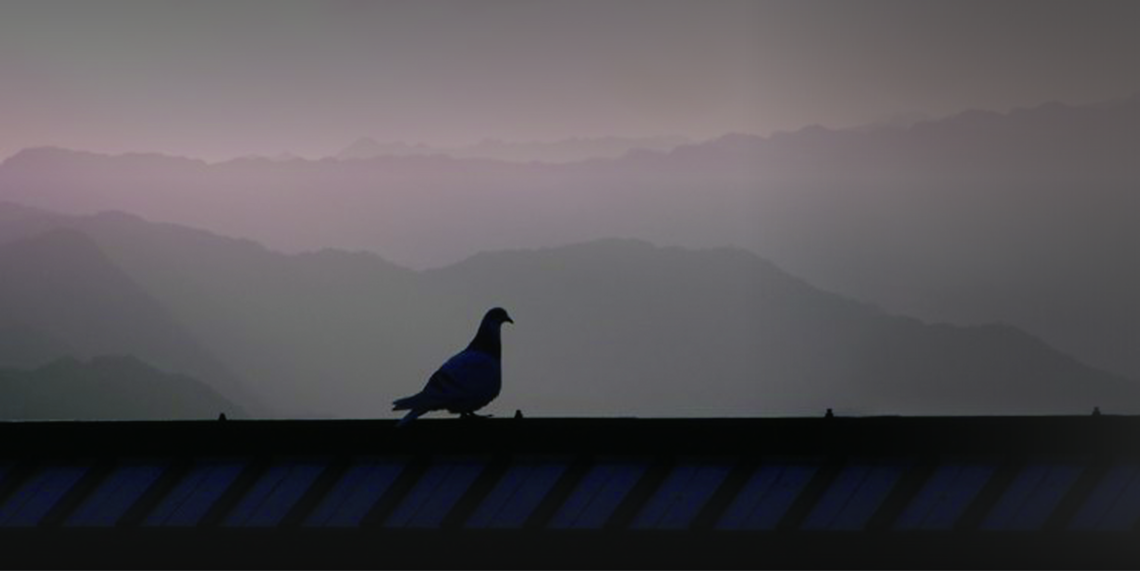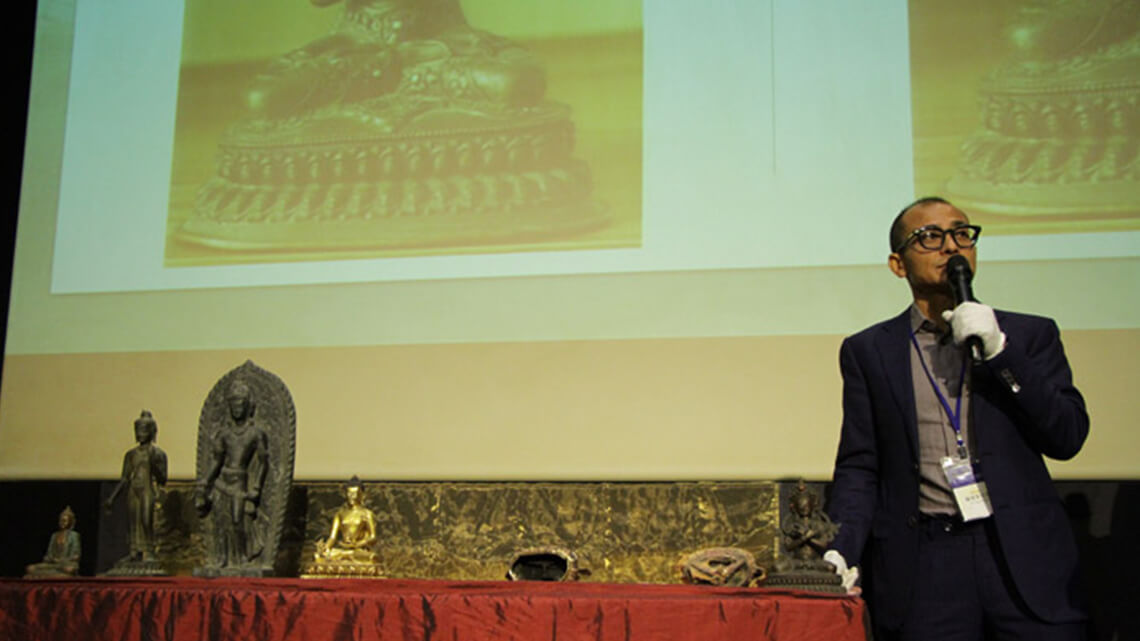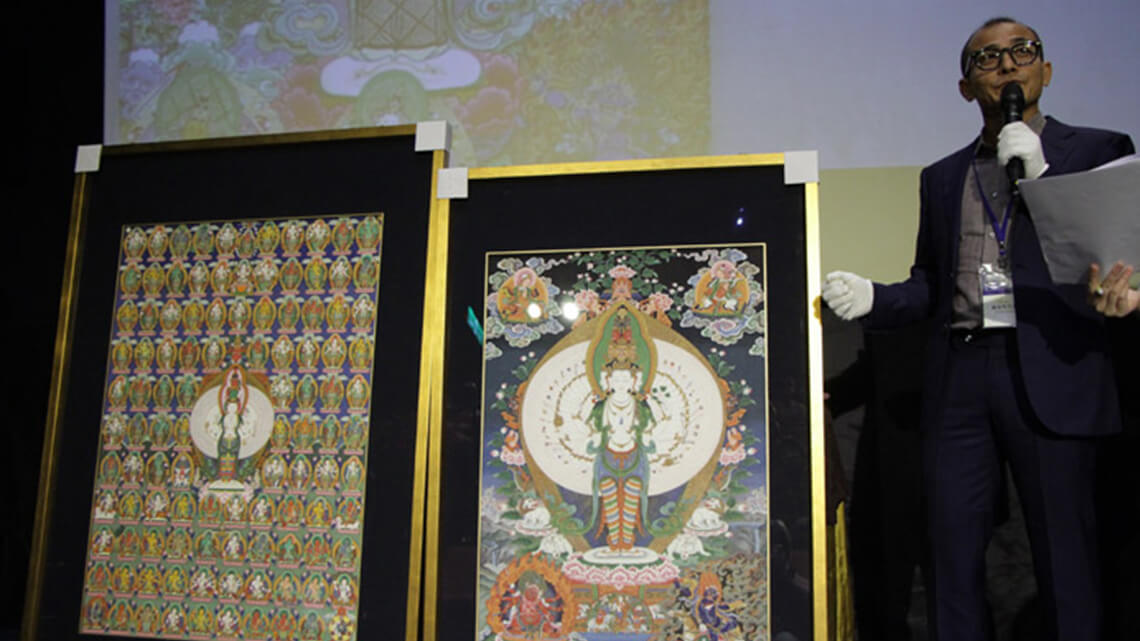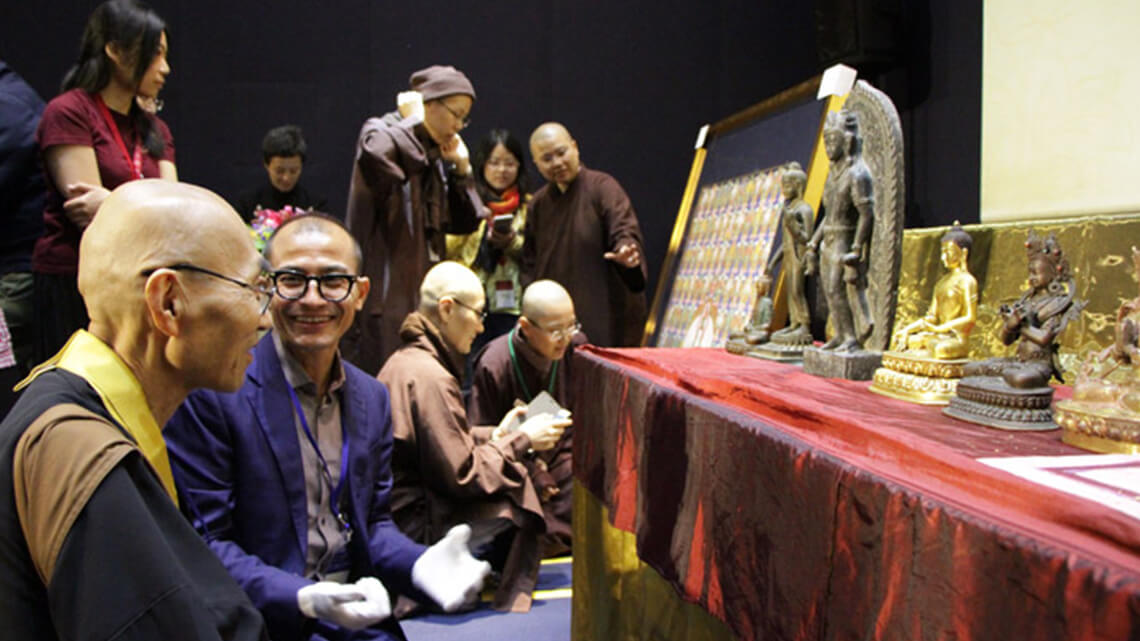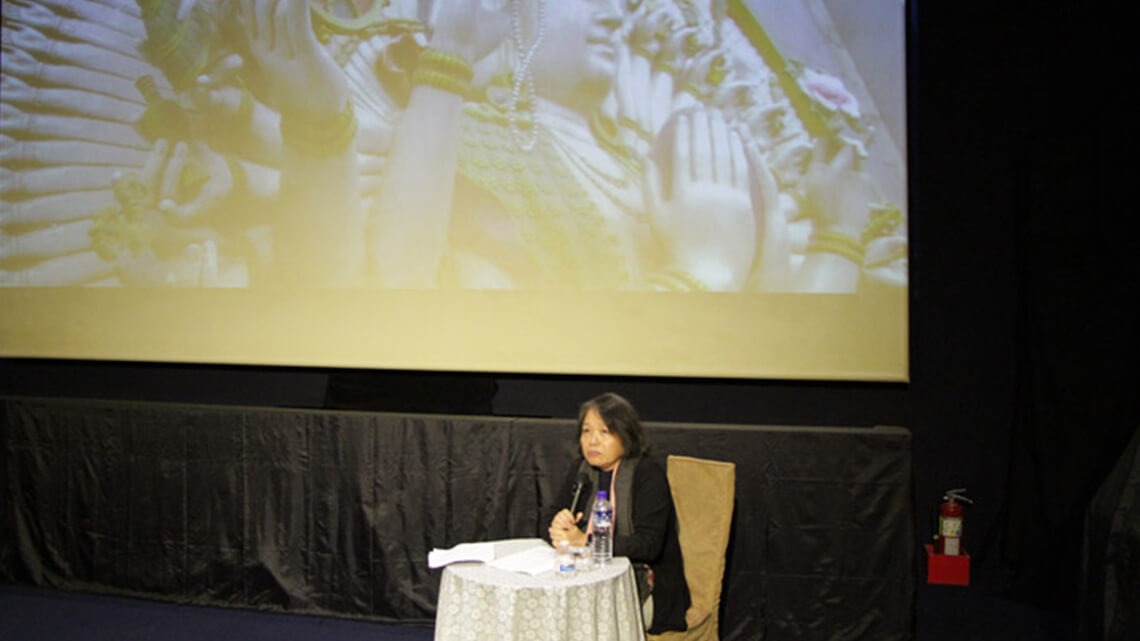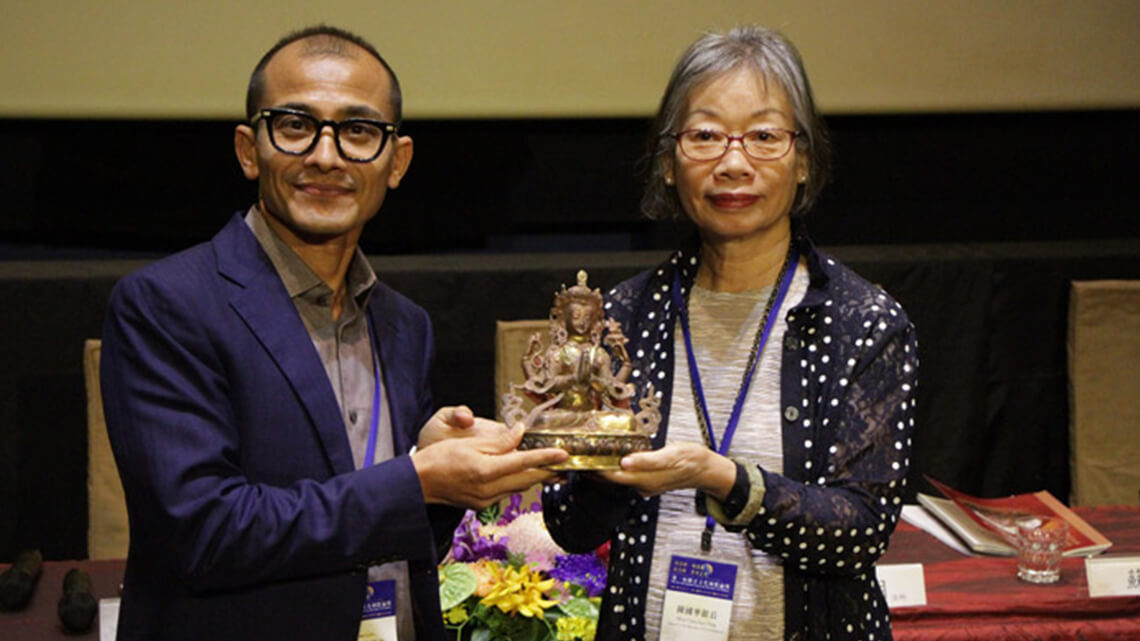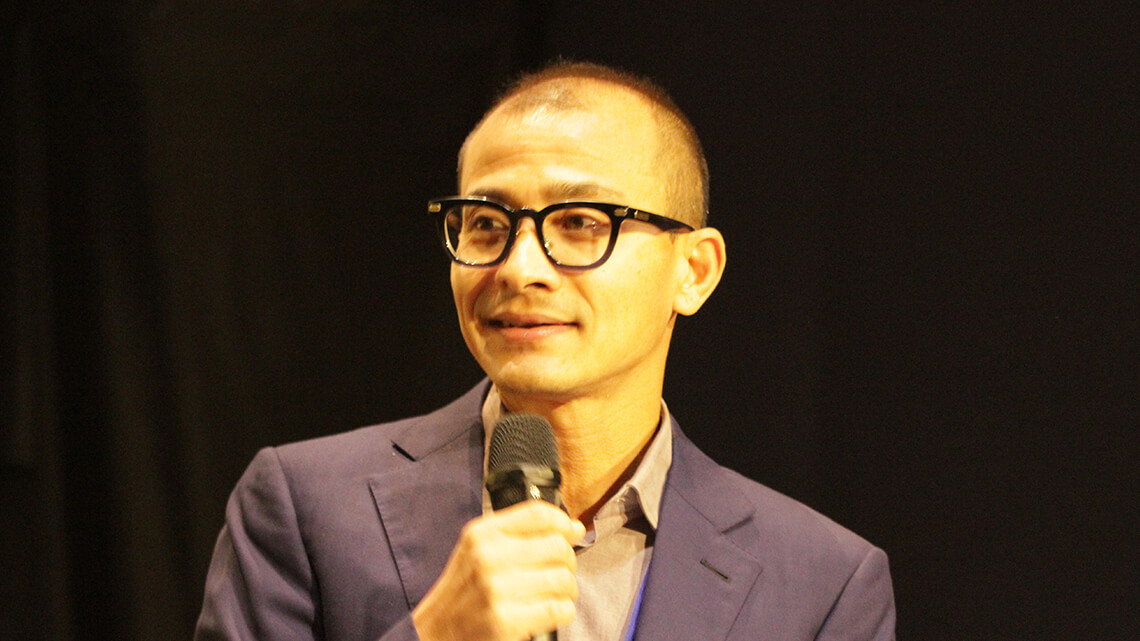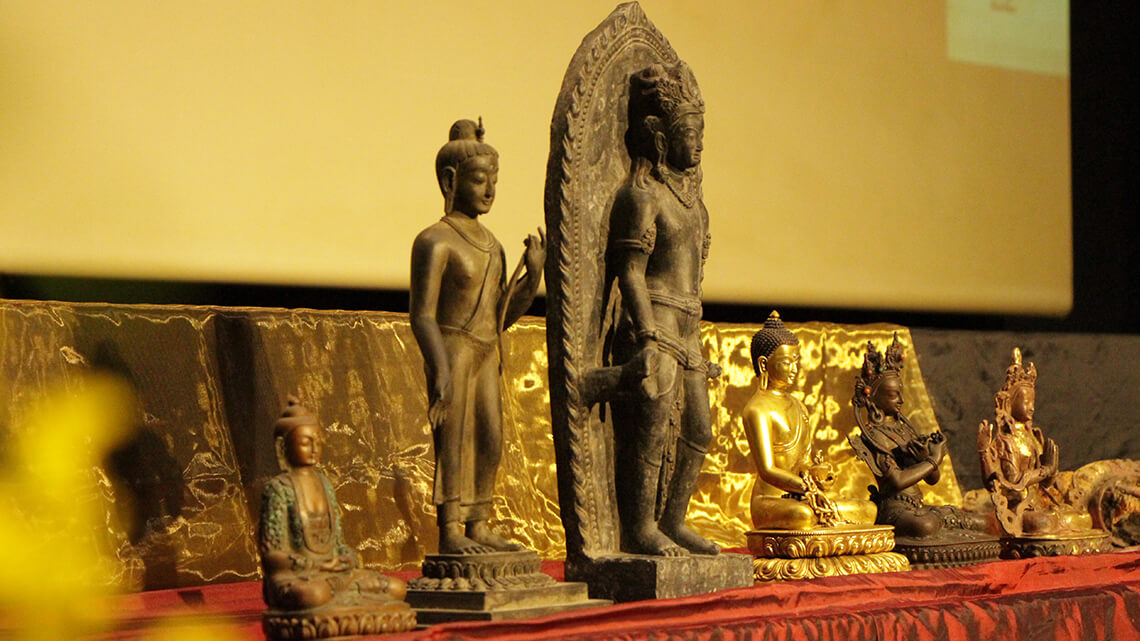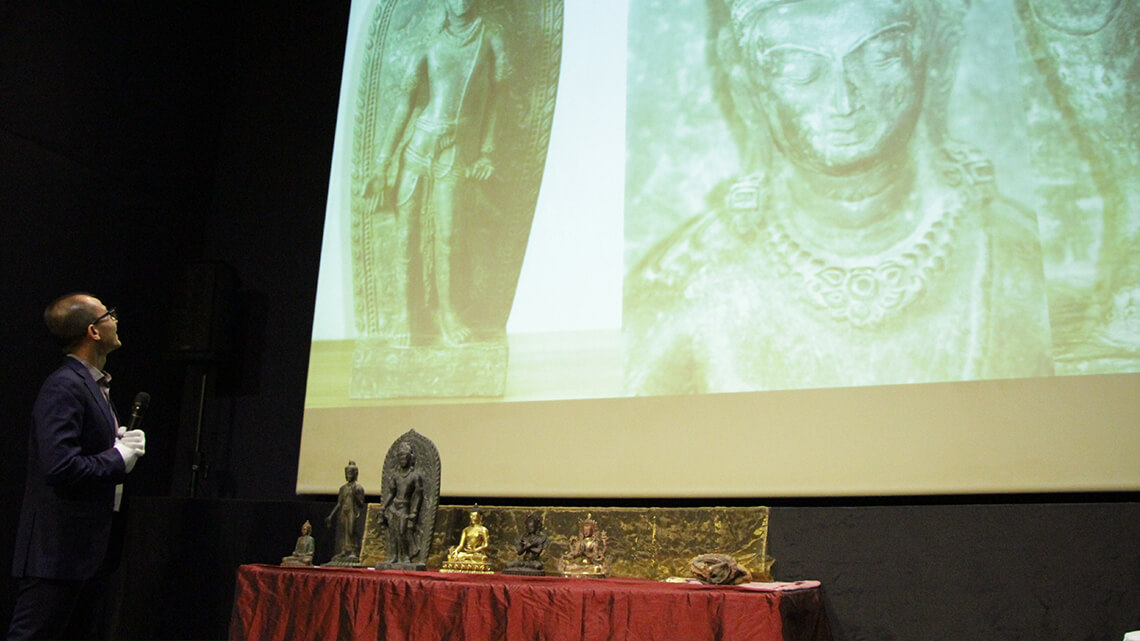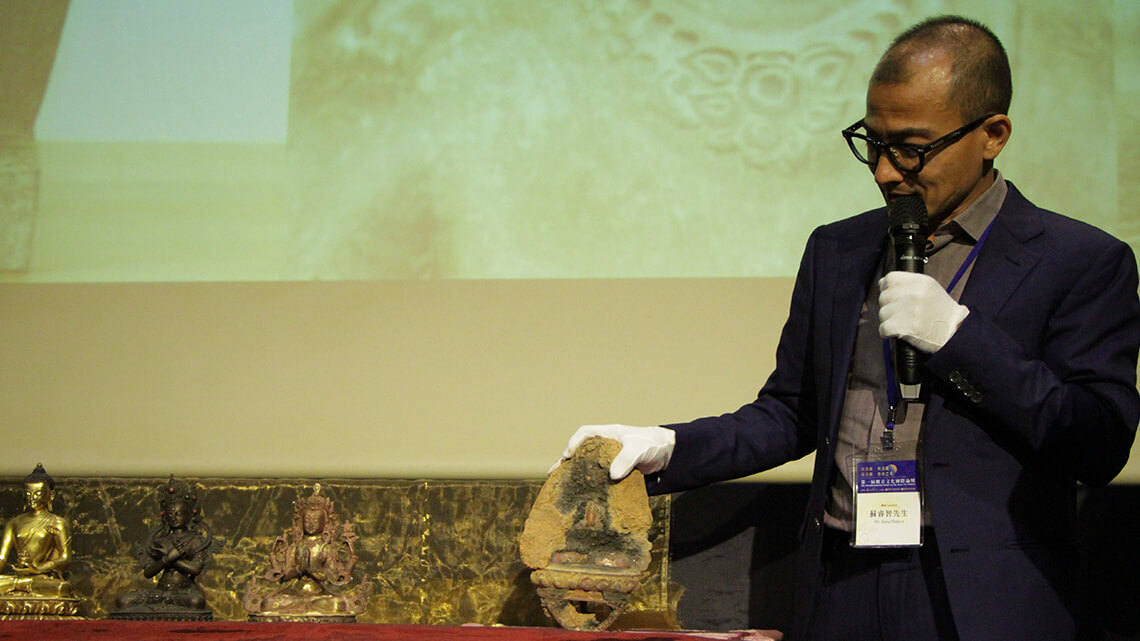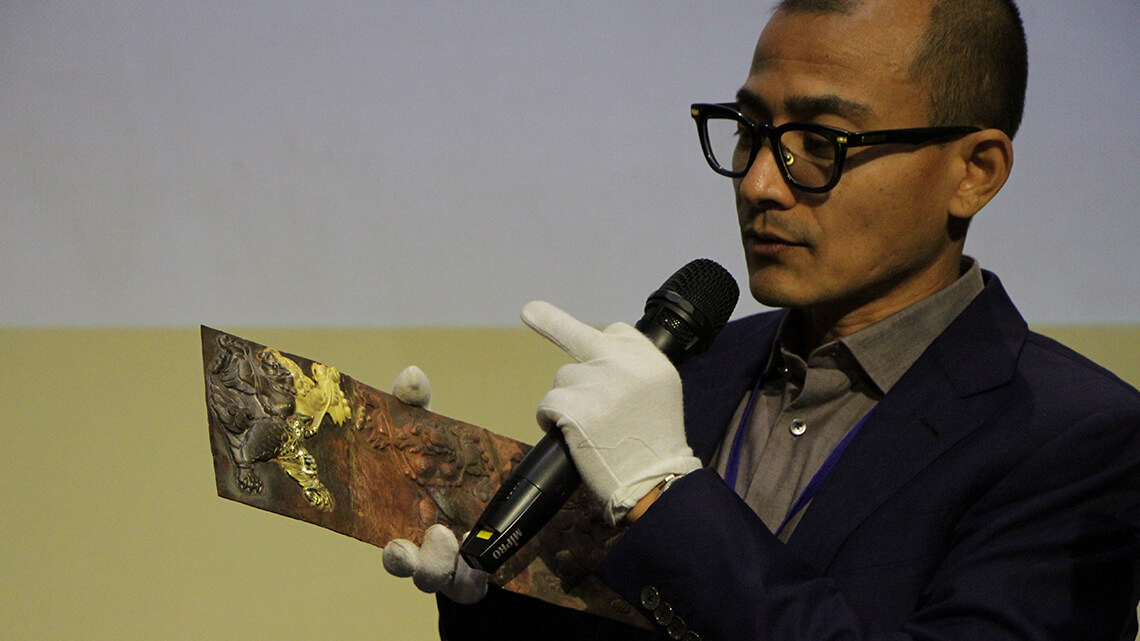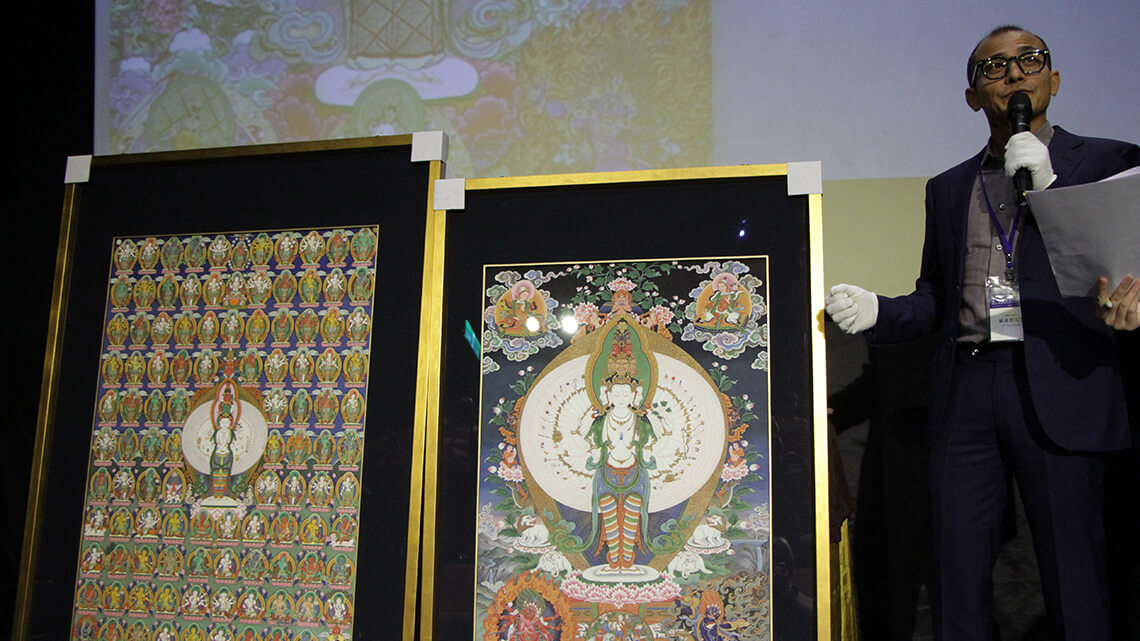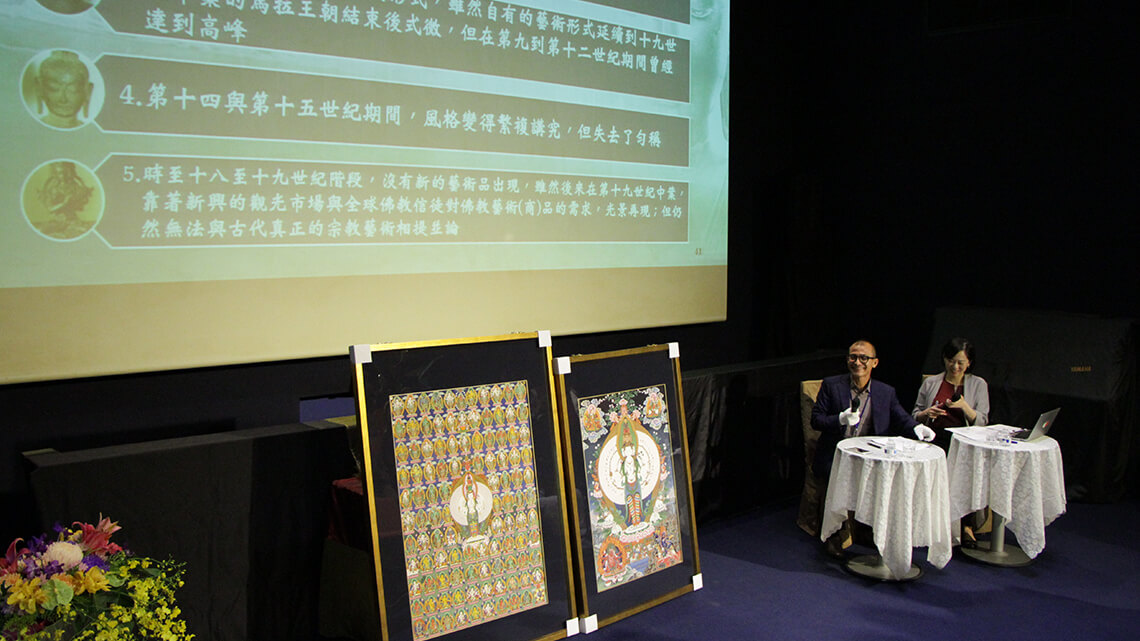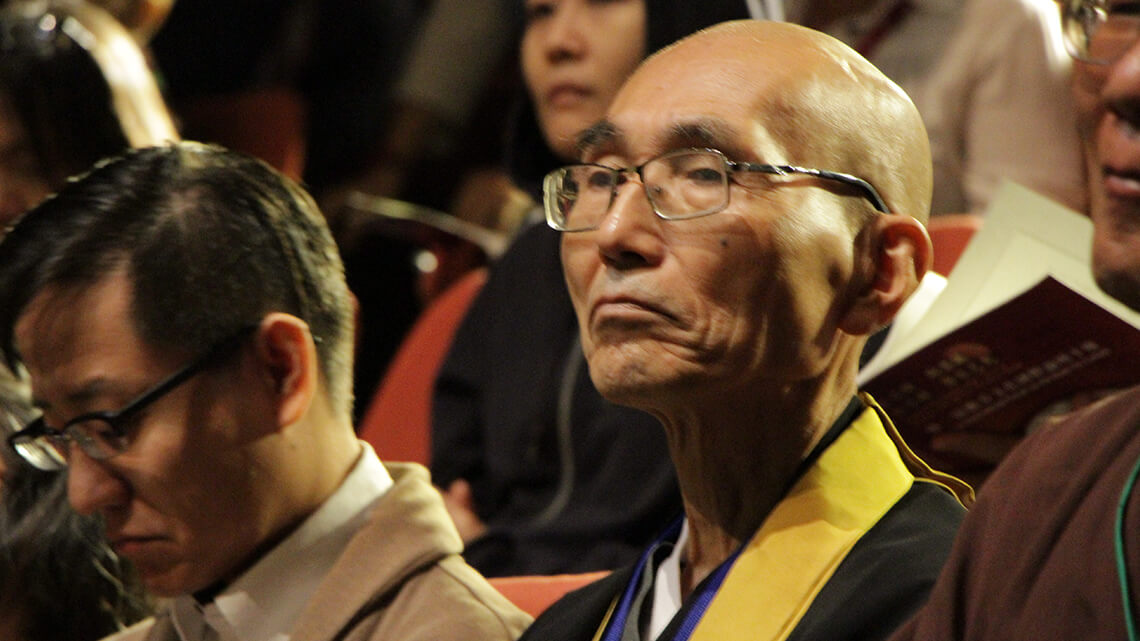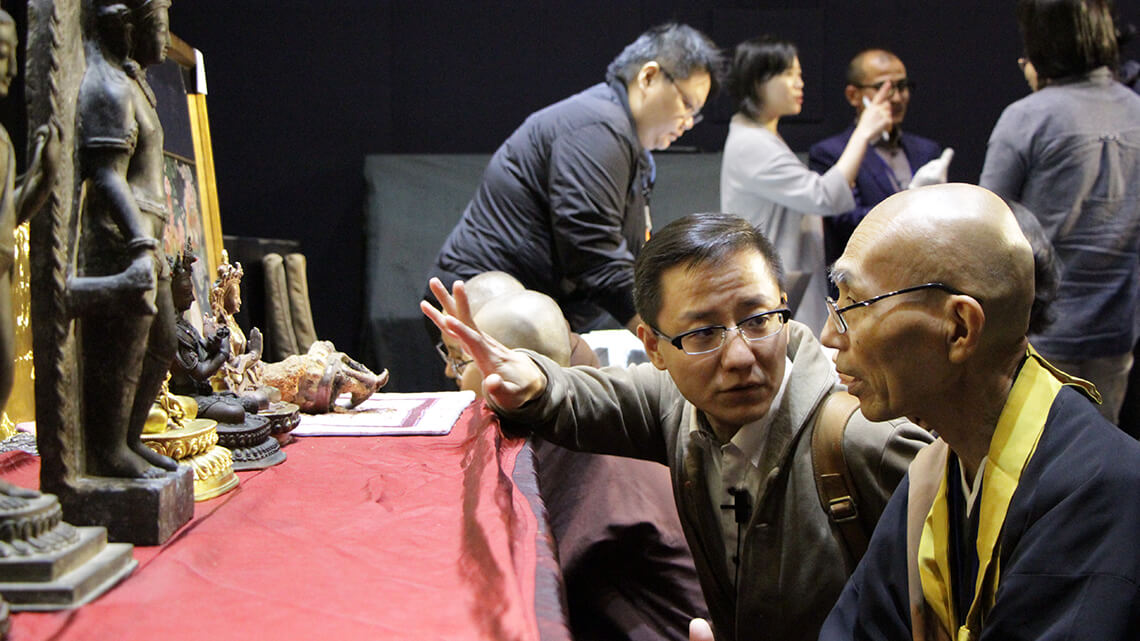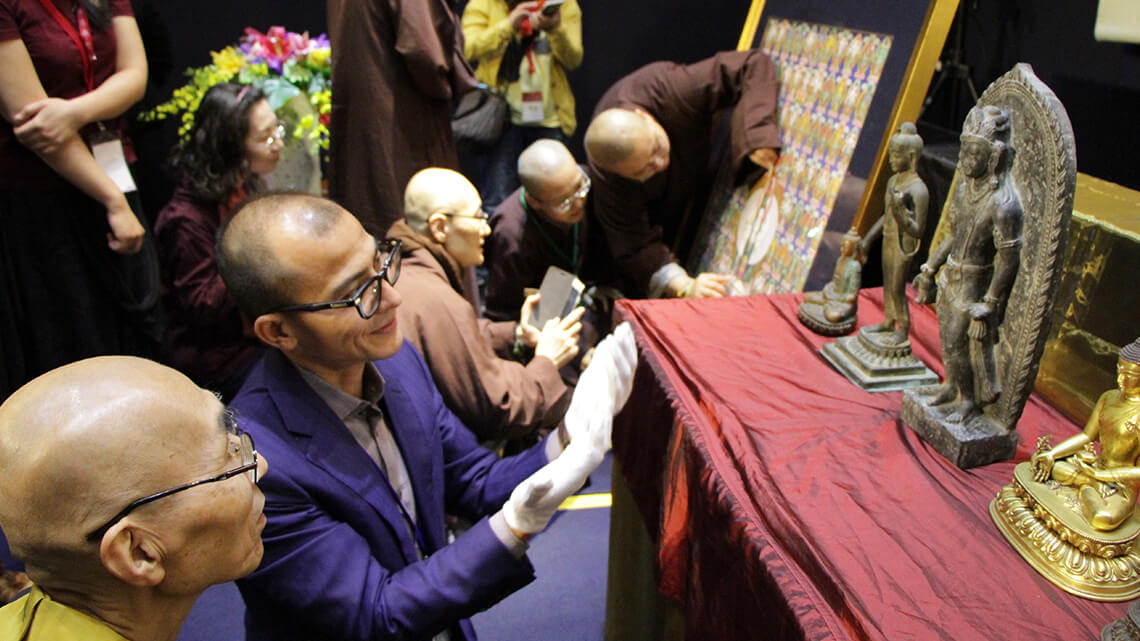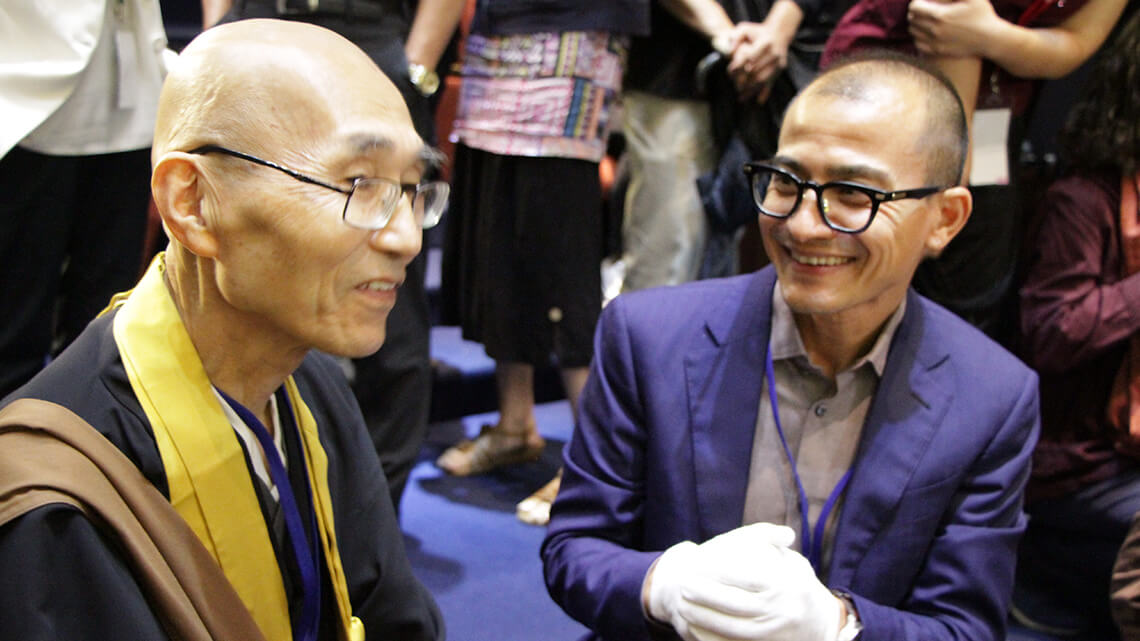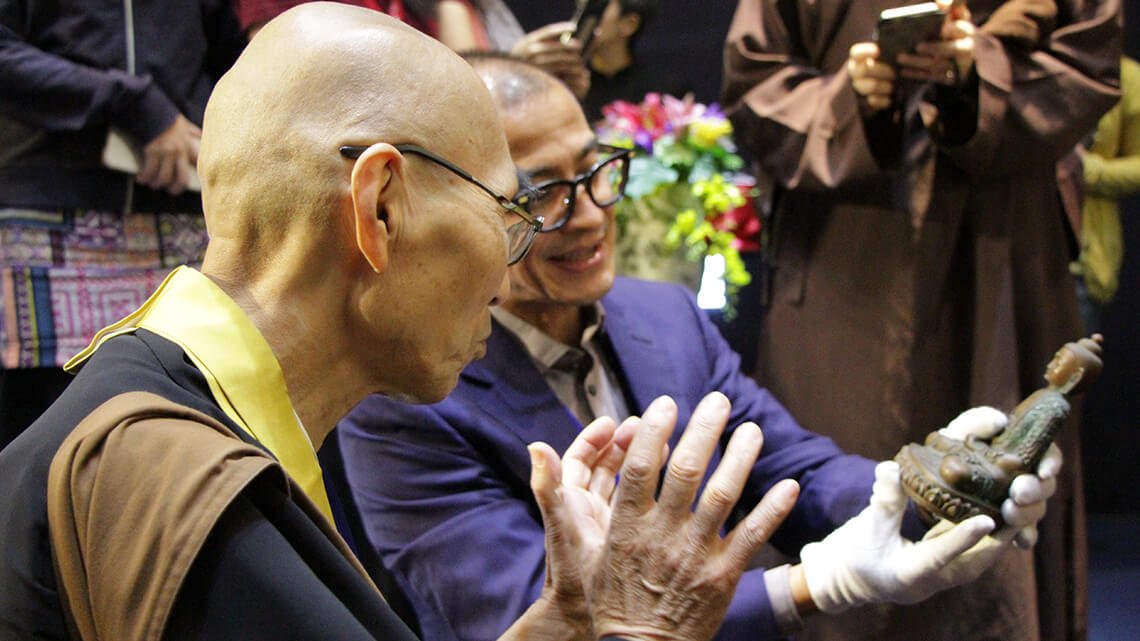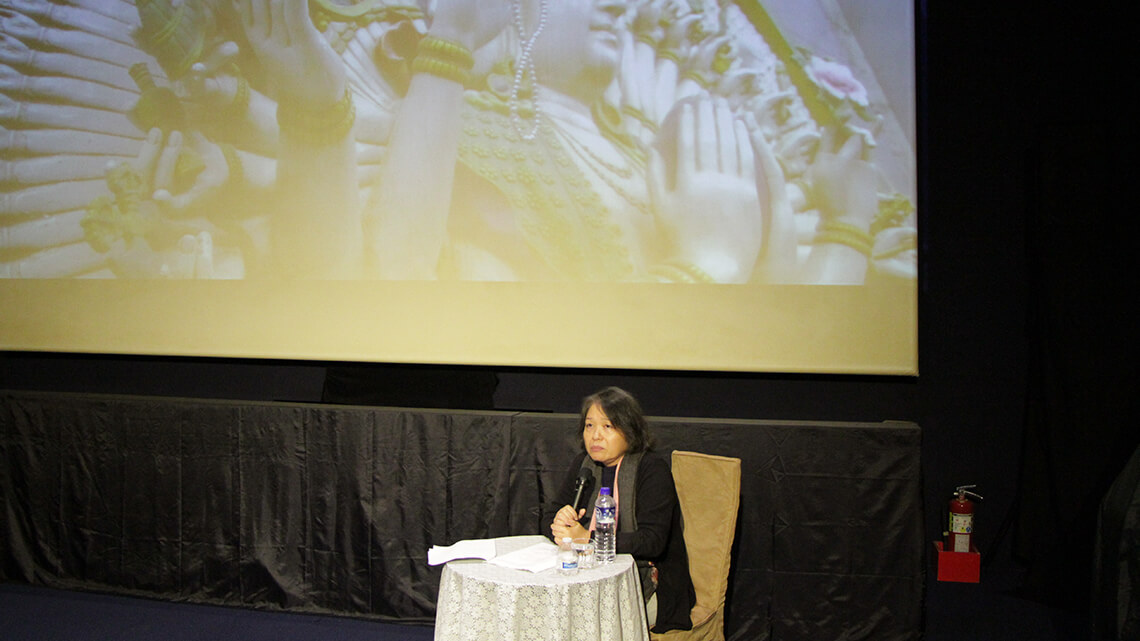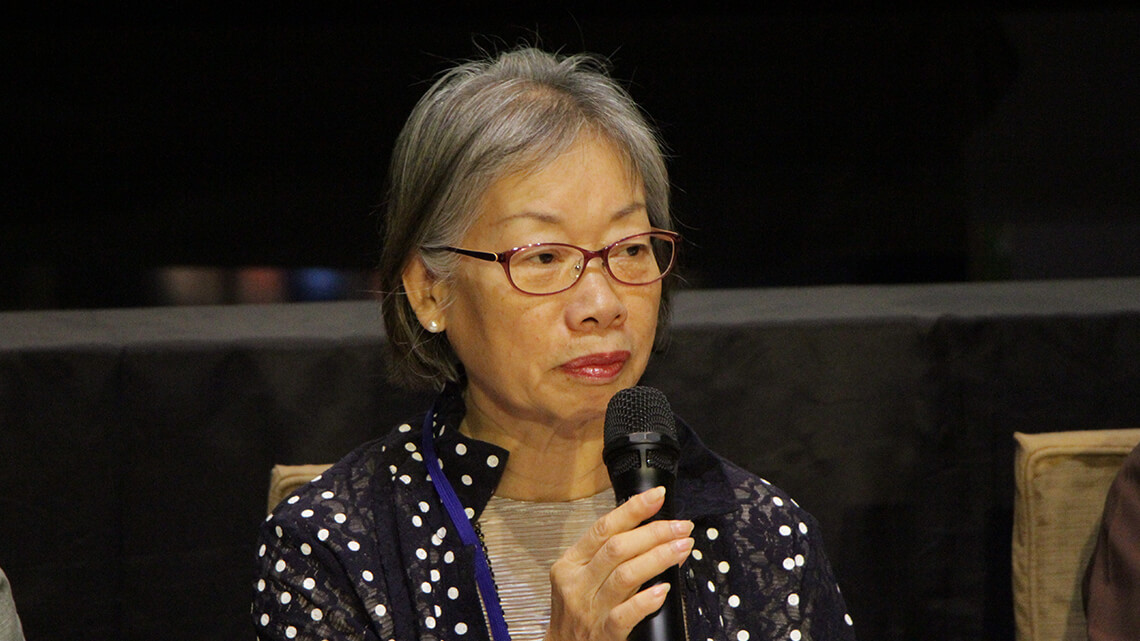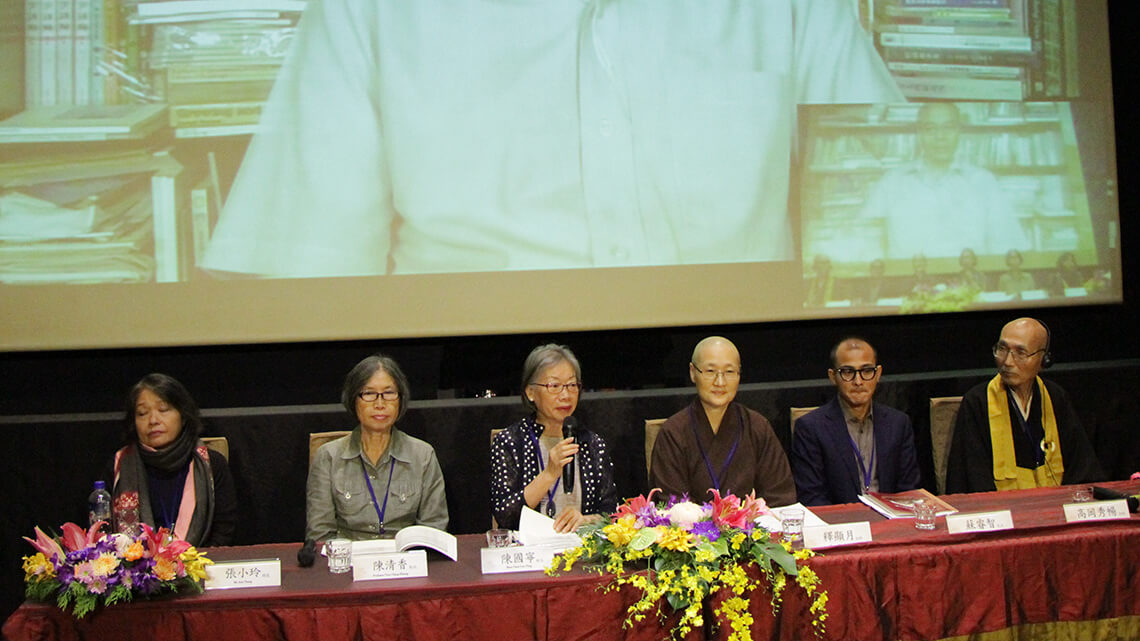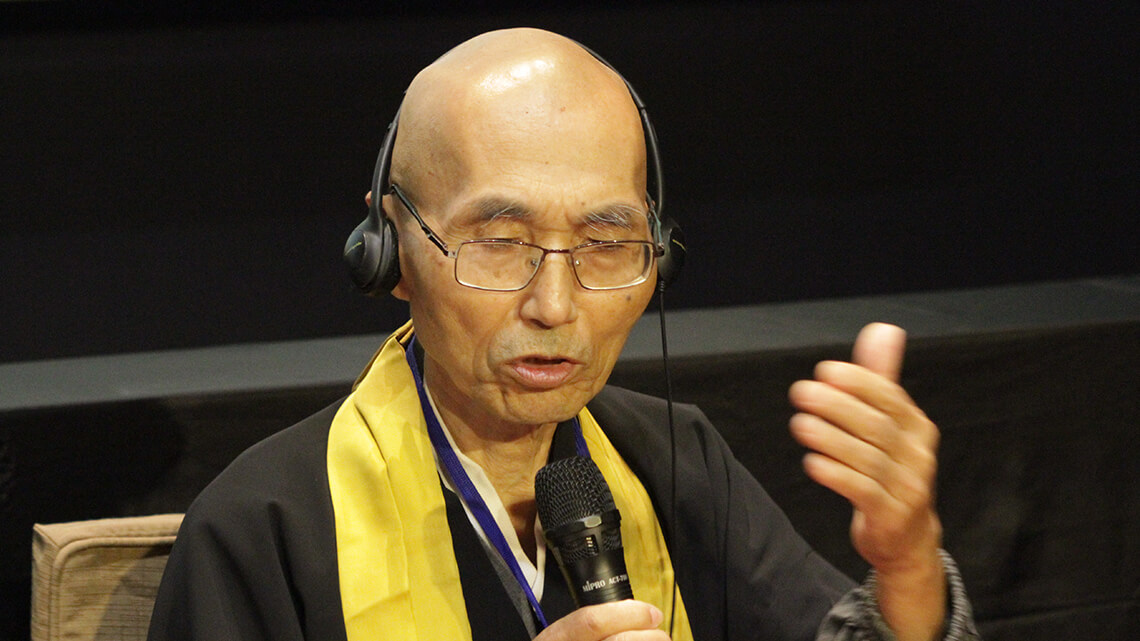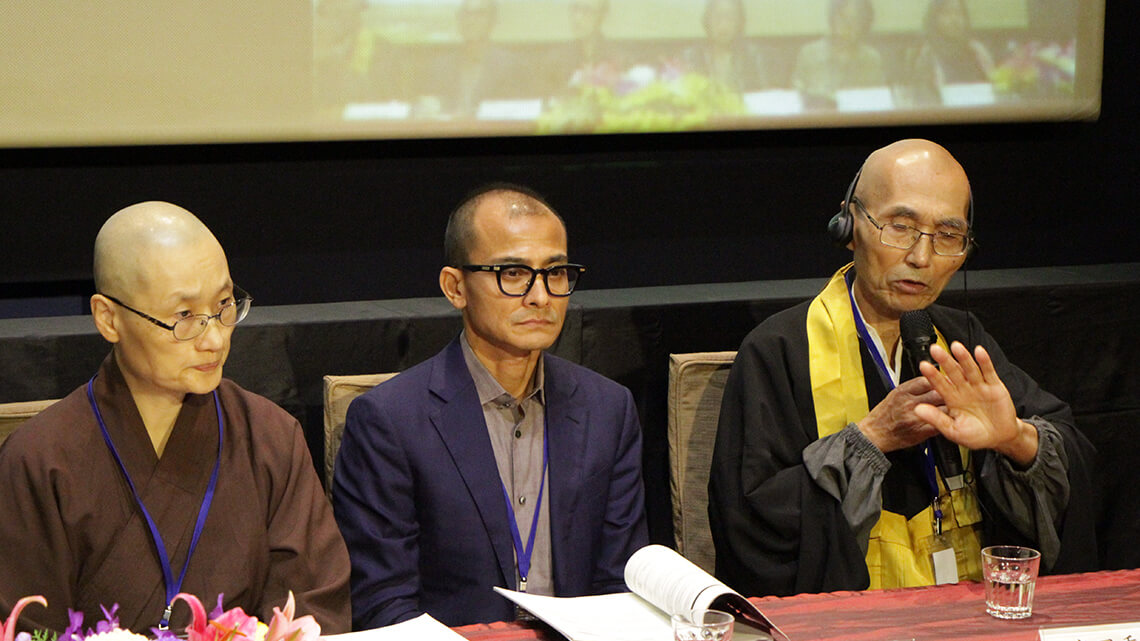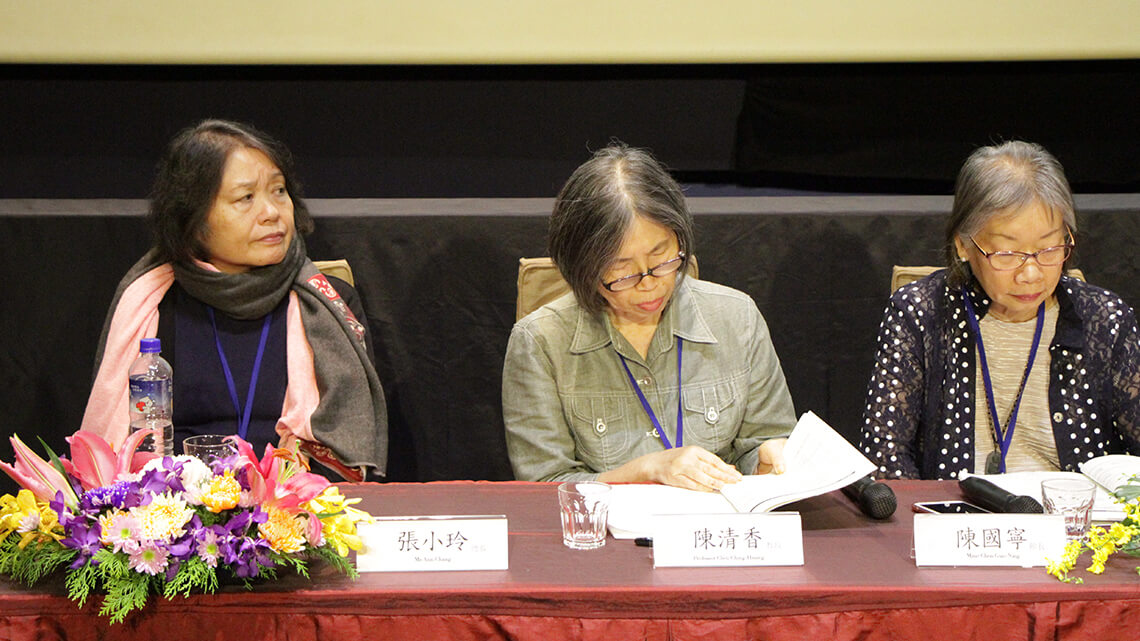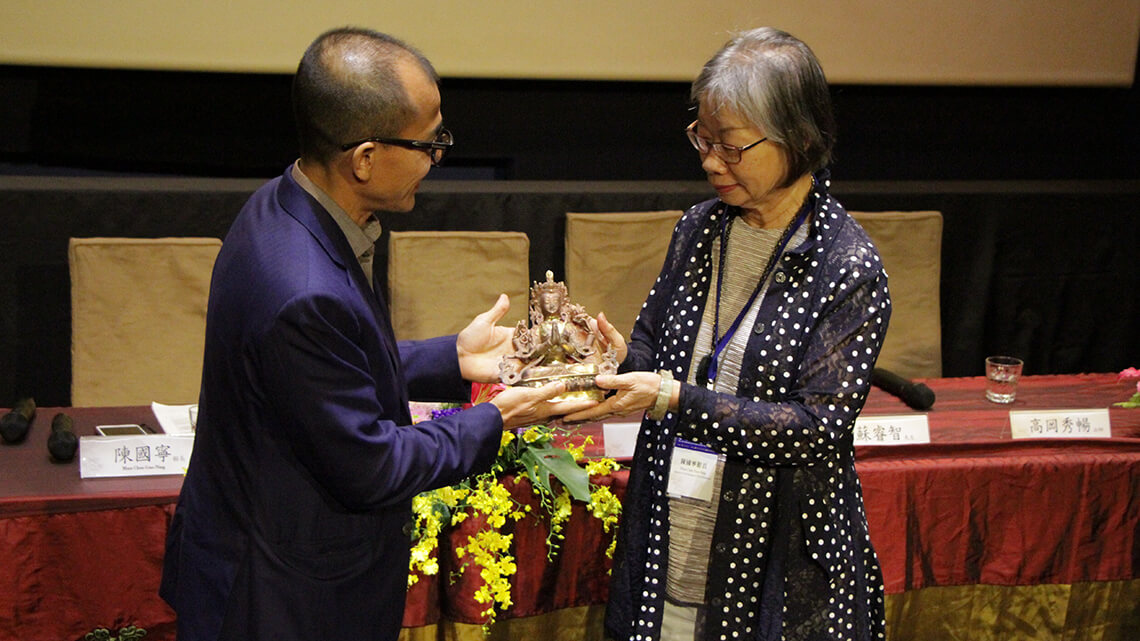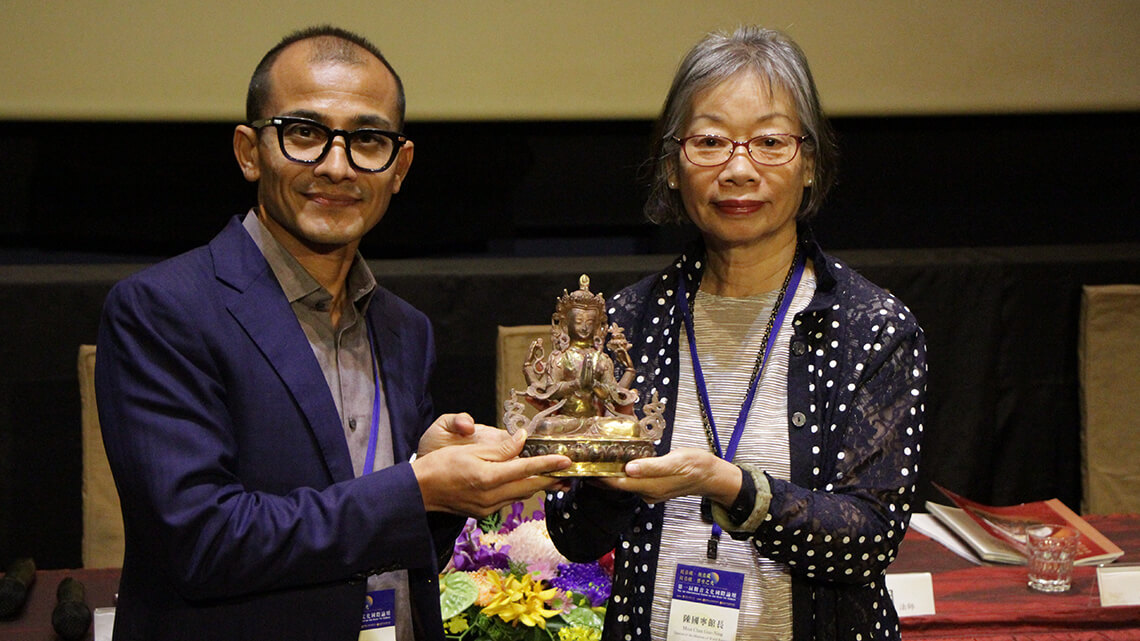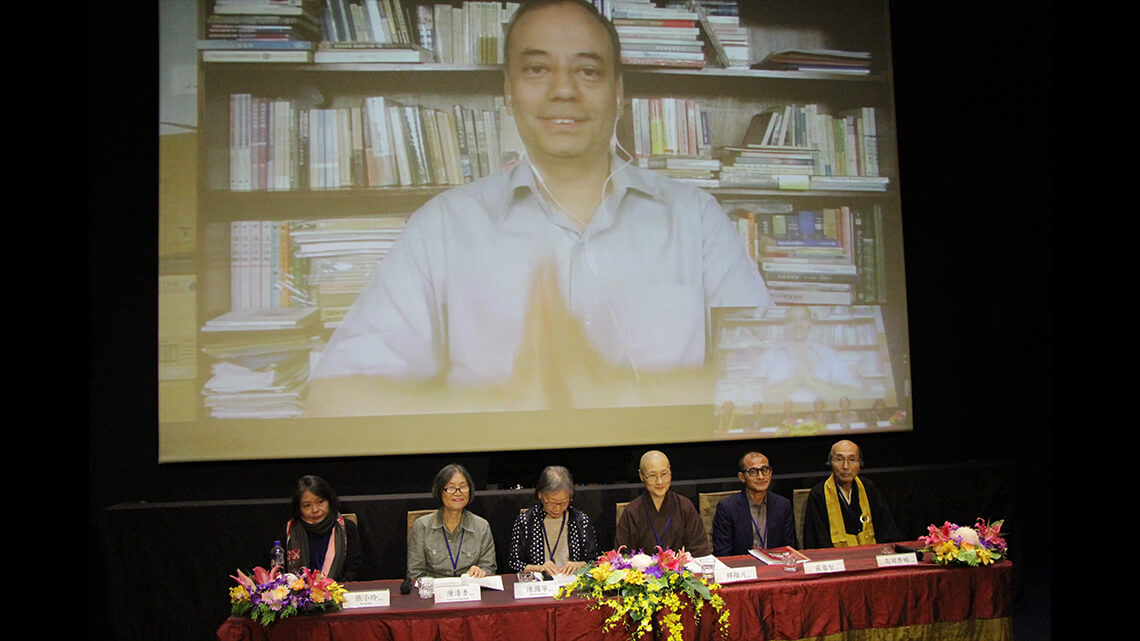The 1st Int’l Forum on the Guan Yin Culture triggers great Response, Feedbacks
2018-10-03
The Ling Jiou Mountain (LJM) Buddhist Foundation and the Museum of World Religions (MWR) co-organized the 1st International Forum on the Guan Yin Culture on September 28, 29, 2018. Day 2 of the Forum featured a presentation by Mr. Suraj Shakya, a reputable artisan specializing in crafting Buddhist statues, who brought along quite a few pieces from Nepal to highlight his talk. Of the objects as ‘teaching aide’ for his lecture, Suraj Shakya left three pieces that he used to demonstrate the metal-casting process for the MWR to keep for educational and informative purposes. The act was a concrete contribution to the exchange of Buddhist art between Taiwan and Nepal.
Ms. Ann Chang, Art Director at the CC Lin Art Studio, was another keynote speaker of Day 2 of the Forum. For someone who had been working closely and side-by-side with the late maestro Lin, Ann Chang was obviously the unchallenged authority on all aspects of the full set of the 108 Lokesvaras in red copper as re-created by maestro Lin and his team. In her recount of the story, or rather history, of how the highly esteemed master sculptor Lin literally dedicated the last 3 years of his life to the artistic reproduction of the 108 Lokesvaras, aesthetic principles were illustrated and details of the fine craftsmanship required for the artwork shared to help better appreciate the masterpieces in full. The audience was apparently captivated by Ann Chang’s engaging presentation.
The surname Shakya suggests a lineage tied to the Buddha himself, and Suraj Shakya shared his background against that suggestion. As a Newari descent and a Shakya offspring, stories of his childhood were accentuated with a cross-reference to both the Newari Buddhism and his family trade in the crafting of Buddhist statues. Speaking from personal experiences in creating such work, Suraj Shakya highlighted key steps of different methods for metalwork, i.e. the lost-wax method for open mold or piece-mold casting, repousse or bas-relief work, as well as how Thang-ga paintings are created. In a quick walk-through of the know-how, relevant details were highlighted as to how best to appreciate the craftsmanship versus aesthetics of different times. The fluidity of the contour line of the statue in the cases of cast metal, for instance, checked against the physical proportion of the statue can be a good yardstick besides the degree of refinement as shown by the engravings and carvings. By contrast, the exactness of how basic rules are observed in the tradition of the Thang-ga paintings apparently pre-empt other considerations.
As pointed out above, Suraj Shakya showcased his talk with the aide of objet d’art he brought with him from Nepal. Besides pieces for a demonstration of the distinction between cast metal versus repousse work, Shakya also made good use of the two exquisite Thang-ga paintings he borrowed from friends for the trip. Half-jokingly he referred to his ‘teaching aide’ as ‘some of the best from personal collections only for the Forum at the MWR.’
The two-day Forum on the Guan Yin culture that has been around for more than two millennia had much to offer as evidenced by the strong feedback from the audience when the panel was pronounced open to the floor. For instance, one participant was wondering out loud how the rather ‘outlandish’ 108 Lokesvaras should be ‘looked at’, now that they are in Taiwan. Dr. Sarbottam Shrestha responded by putting the emphasis on ‘do not overlook the woods for the trees’, meaning the Guan Yin worship has become global and the practice may continue to differ from place to place. Professor CHEN Ching-Hsiang revisited her talk to remind that the emanations and transformations of Guan Yin always change from time to time, from region to region, but the core spirit of Guan Yin remains the same with the compassion. Master Xian Yueh summed it up by pointing out that all religions put the concept of love first and foremost to downplay the natural and/or man-made differences. That being the case, we ought to remind ourselves that people ought to be as one in safeguarding our only planet for the sake of our inter-reliant symbiosis.
Another question from the floor during the panel’s Q&A session was directed at art director Ann Chang of the CC Lin Studio and it had to do with whether a certain ritual had been performed routinely when the studio was on the commission to re-produce the 108 Lokesvaras. Ann Chang replied with a definitive ‘yes’ to the effect that her colleagues at the studio would practice meditation to calm down for better concentration before starting the day’s work. And since the task was Guan Yin centric, they would visualize Guan Yin of the Great Compassion for the key portion of their meditation. Over time, the notion of compassion permeated through their work as well as their daily life.
Venerable Master Shucho (secular name Hidenobu Takaoka) reflected on the Forum’s proceeding and shared his sentiment that the Forum was a productive platform for fellow speakers to share different experiences and expertise on the same religious icon - Guan Yin. He was much impressed and has high hopes that more people can be motivated to learn more about Guan Yin and become devoted followers.
The two-day Forum was concluded following the panel discussion, and Suraj Shakya presented a Guan Yin statue and two molds to the MWR, received by Director Chen of the Museum. It was mentioned that the next Forum can perhaps be held at one of LJM’s meditation facilities abroad.
